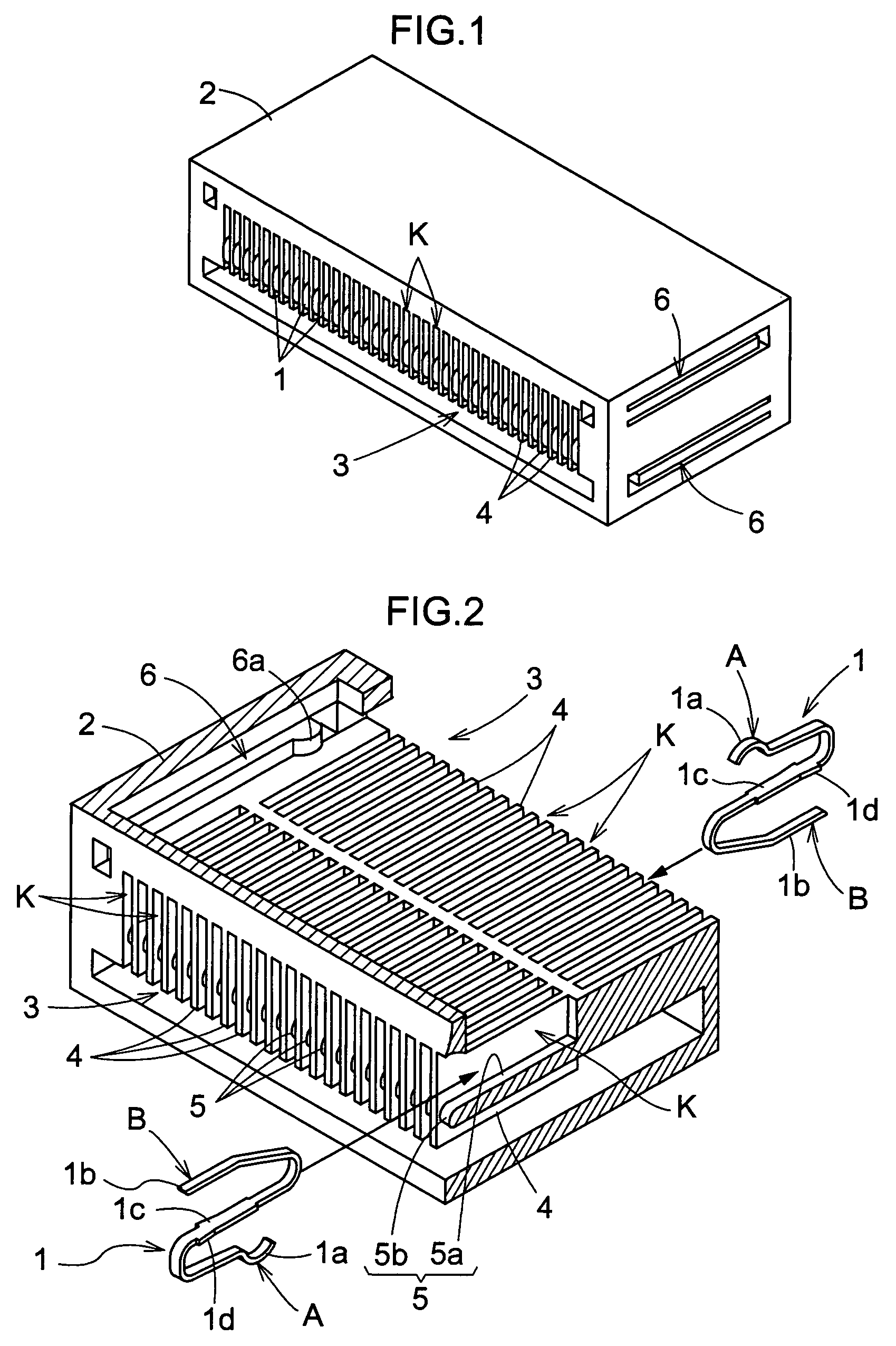Connector
a technology of connecting rods and connectors, applied in the direction of coupling contact members, coupling device connections, two-part coupling devices, etc., can solve the problems of complicated element construction, large connecting rods, and restricted assembly order, so as to improve reliability in time of use
- Summary
- Abstract
- Description
- Claims
- Application Information
AI Technical Summary
Benefits of technology
Problems solved by technology
Method used
Image
Examples
Embodiment Construction
[0048]An embodiment of the present invention will be described hereinafter with reference to the drawings.
[0049]An embodiment of a connector according to the present invention will be described with reference to the drawings.
[0050]As shown in FIGS. 1–4, 5 (a), 5 (b), 5 (c), 6 (a) and 6 (b), the connector according to this invention includes contact members 1 having elastically deformable points of contact A and B formed in two locations, and a main connector body 2 for insulating and holding a plurality of contact members 1 arranged at intervals in a width direction with the two points of contact A and B of the respective contact members 1 being in the same positions as seen in the direction of arrangement. FIG. 5 (b) is a cross section taken on line X—X shown in FIG. 5 (a), FIGS. 6 (a) and 6 (b) are views in vertical section taken on line Y—Y shown in FIG. 5 (a).
[0051]The above main connector body 2 has a pair of socket portions 3 for receiving board ends 10 defining land electrode...
PUM
 Login to View More
Login to View More Abstract
Description
Claims
Application Information
 Login to View More
Login to View More - R&D
- Intellectual Property
- Life Sciences
- Materials
- Tech Scout
- Unparalleled Data Quality
- Higher Quality Content
- 60% Fewer Hallucinations
Browse by: Latest US Patents, China's latest patents, Technical Efficacy Thesaurus, Application Domain, Technology Topic, Popular Technical Reports.
© 2025 PatSnap. All rights reserved.Legal|Privacy policy|Modern Slavery Act Transparency Statement|Sitemap|About US| Contact US: help@patsnap.com



